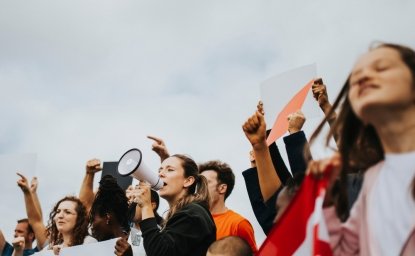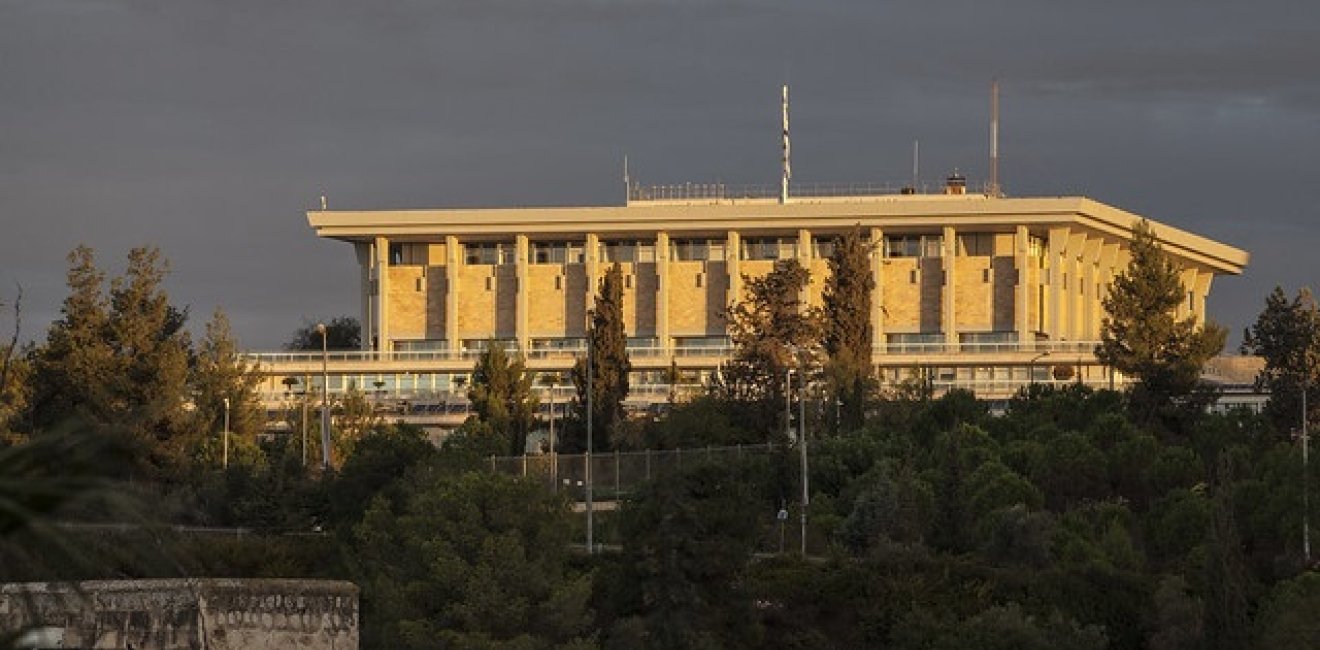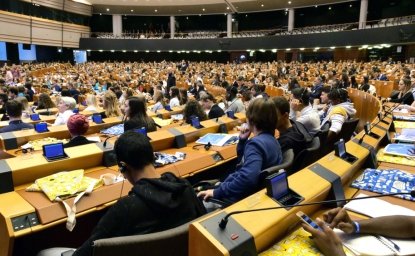
A blog of the Middle East Women's Initiative
In both the April and September 2019 elections in Israel there was a significant decrease in the number of women elected to the legislature for the first time since the late 1990s. This is despite the record number of women in the 20th Knesset session (2015-2019), a total of 37 women out of 120 legislators. Another historic achievement of the 20th Knesset was the presence of three Palestinian-Israeli women legislators. They represent more than half of all Palestinian-Israeli women to ever serve in the Israeli legislature. After such important gains in women’s representation in Israel – what explains this most recent decline?
Israel represents a fascinating case for examining gender and politics. Some factors in Israel suggest that we should expect high levels of women’s political representation; like a history of political enfranchisement, prominent women political leaders, mandatory conscription for women, strong civil society, and a ‘woman-friendly’ electoral system. However, increases of women in the Knesset (Israeli legislature) have largely dragged behind global trends. Some of this can be explained by the lack of a legislative quota. Ye this is an insufficient explanation.
Number of Women Knesset Members 1949-2018


As the number of women in the Israeli Knesset has increased, the number of women holding cabinet positions has not increased at the same rate. This large gap between women in the legislature and women in the executive also reflects global patterns, where despite greater entry into politics, women are often unable to progress in their political career and gain access to agenda setting positions within their party or within the government. In the Israeli case, the 33rd government during the years 2013-2015 saw the highest number of women in the cabinet with four women ministers – Tzippi Livni, Limor Livnat, Yael German, and Sofa Landver. Between 1949 and the late 1970s only one woman had ever been a minister, that woman was Golda Meir. Only in the 1990s did the number of women simultaneously in the cabinet double – from one woman, to two women. Most of the women cabinet ministers held less prestigious offices in issue areas seen as “feminine” or focused on social matters. In Israel the four most important offices are Foreign Affairs, Defense, Finance, and Interior. Of these four portfolios, women have only held Foreign Affairs. Those women were Golda Meir and Tzipi Livni, both women who were party leaders and political incumbents. Gaining seniority and experience in prestigious positions in the legislature and/or cabinet are imperative for political advancement – and yet these remain a major hurdle for women globally and in Israel especially.

In my own research I find that Israeli women legislators experience a process of tokenizing and marginalization within the Israeli legislature. Women Knesset Members increasingly focus on gender legislation as they gain seniority. Furthermore, despite being incumbents and expecting to be political leaders within the legislature, my data shows that only Junior women Knesset Members seek out Senior women Knesset members for co-sponsorship on gender-related legislation. Consequently, in Israel women legislators become exclusive experts on women’s issues but are unable to expand their legislative activity beyond this.
Parties that featured women overwhelmingly lost in the 2019 election, further suggesting the pervasiveness of hostility towards women in politics and leadership in Israel. This is supported by forthcoming work by Dr. Ayala Yarkoni-Sorek whose experimental research shows that Israelis have overwhelmingly negative attitudes towards women in leadership regardless of conflict or peace conditions. A point I will discuss further in the analysis of election results and party leadership.
Another global pattern with regards to women and politics is the gender voting gap, in which we observe women voters expressing greater support for leftist parties -primarily because of their concerns for social issues like education and healthcare, as well as labor-family policies. The first time researchers identified a clear modern gender voting gap in Israel was after the elections in 2009 in which Livni ran against Netanyahu (Gedalya, Herzog, and Shamir, 2010). Then again in 2013 when three different parties were led by women (Shamir and Gedalya-Lavy, 2015). Similar to voting patterns around the world, we observe men increasing their support for extreme right parties – focusing on nationalist rhetoric - in the Israeli case the emphasis being on Jewish nationalism.
The differences in voting matters as center and left parties in Israel tend to have higher percentages of women candidates on their list. As a result, women voters are more likely to vote for women candidates, and men are less likely to do so. This gender gap in support for women political candidates is further supported by polling data from the Guttman Center showing that 70% of women think women are equally good politicians, as opposed to just over 50% of men. There is a 20 point difference in attitudes toward women politicians between men and women in Israel.
However, despite a preference for parties who support negotiations with Palestinians - it is worth noting that women in Israel are not particularly dovish. Women in Israel are more likely to support defensive military action in order to prevent harm to citizens. Researchers argue that this is driven by women’s caretaker perspective. Nevertheless women are less likely to support offensive military action. But since most Israeli military activity is framed as “defensive” and “protective” this is a fairly meaningless distinction. That is to say – women in Israel are likely to support belligerent policies.
In both the April and September elections of 2019 the results demonstrate key features of research on women and politics in Israel. The first major takeaway is that incumbency and seniority in Israel remain major institutional hurdles for women politicians. The second conclusion is that Israeli voters and in particular men voters, do not significantly value the presence of women politicians. There is not sufficient research on the effect of gender bias on vote choice in Israel, yet there is some descriptive evidence that the effect may be substantial.
The 2019 elections saw the exit of many senior women politicians, including former party leaders like Shelly Yechimovich, and former cabinet Ministers like Sofa Landver. Previously, there was greater variation among parties on how they determined candidate lists for the elections. Some parties determined the list with an internal party committee, others held open or closed primaries, and finally in some cases the party leader themselves created the list on their own. Gender and politics research claims that women candidates are more likely to be successful at getting on the list the less electoral hurdles there are, therefore, open primaries are considered the most woman friendly. In the 2019 election none of the parties that ran held open primaries. In fact, most of the parties’ candidate lists were determined by their party leaders. While in previous elections party leaders placed more women on the list, parties like Yisrael Beiteinu and Yesh Atid, in this election such parties had significantly less women and also pushed out leading incumbent women.
Additionally, both in the April and in the September elections, parties featuring women candidates decreased or maintained their seat share. In April, Orly Levy-Abekasis a previously independent Knesset Member who formed her own party under the name of her father’s party, Gesher, was polled having up to eight seats at certain points. Ultimately, Levy-Abekasis’s party was unable to pass the electoral threshold. Also in April, The New Right was a party established by the previous Minister of Justice Ayelet Shaked and Naftali Bennett the previous Minister of Education, two political power houses that polls predicted would get 14 seats. They were also unable to pass the electoral threshold. Their campaign materials featured Ayelet Shaked prominently, including a much derided ad that intended to frame her critics as sexist but instead presented her in an oddly objectifying fake commercial for perfume. Shaked and Bennett joined with HaBayit HaYehudi (the Jewish Home) to create the Yamina party and placed Shaked in the number one spot on the party list. The strategy of placing Shaked, a prominent woman politician, at the top of the list did not produce electoral gains. Importantly, scholarship argues that parties appoint women to party leadership when the party is in electoral decline or when it has no other choice (O’Brien, 2012). This is reflected in the Israeli case as well - parties with women leaders either lose seats, as in the cases of the Labor party and Kadima, or maintain similar levels of support, as in the case of Meretz.
Nearly half of the Labor party’s list was made up of high profile women with impressive political credentials in the run up to the April elections and yet they too experienced a significant blow, shifting from 24 seats in the previous Knesset session to only 6 seats. In the September elections, Labor joined with Orly Levy Abekasis’s Gesher party and maintained the same level of electoral support, getting six seats.
Netanyhu’s main opponent former Chief of Staff Benny Gantz established a new party for this election for which he recruited other former high ranking military generals, and then created a joint list with Yair Lapid and his party Yesh Atid. Although the Yesh Atid party had a number of highly regarded women legislators, many of them were placed in unrealistic positions on the joint party list. Consequently the joining of these two lists further facilitated the significant decrease of women in the new legislative session in Israel, as well as the pushing out of experienced women politicians.
In conclusion, the relative slow pace of increases in women’s representation in Israel is unlikely to be explained by political socialization. Women are present in high numbers within political movements, in state institutions, in the military, and in the labor force. What best explains relatively low levels of women’s political representation in Israel are gender bias within parties and the legislature, and gender bias among voters. Policy makers should focus on these aspects if they are interested in making a difference in Israeli politics.
Author


Middle East Program
The Wilson Center’s Middle East Program serves as a crucial resource for the policymaking community and beyond, providing analyses and research that helps inform US foreign policymaking, stimulates public debate, and expands knowledge about issues in the wider Middle East and North Africa (MENA) region. Read more


Middle East Women's Initiative
The Middle East Women's Initiative (MEWI) promotes the empowerment of women in the region through an open and inclusive dialogue with women leaders from the Middle East and continuous research. Read more

Explore More in Enheduanna
Browse Enheduanna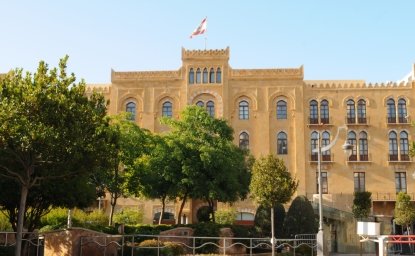
Women are the Catalysts for Change in Lebanon
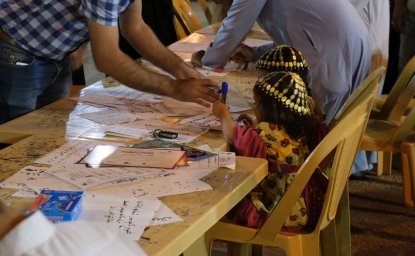
How Education Can Empower Young Women in MENA
